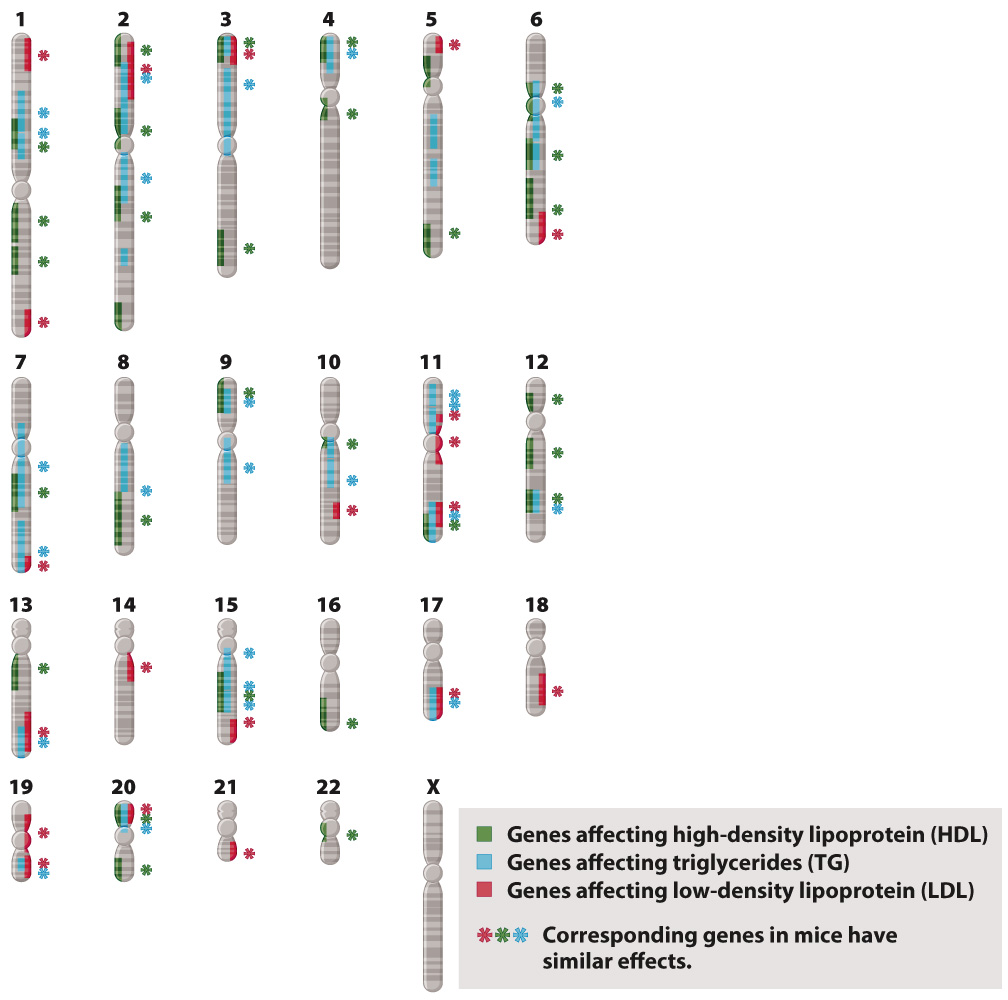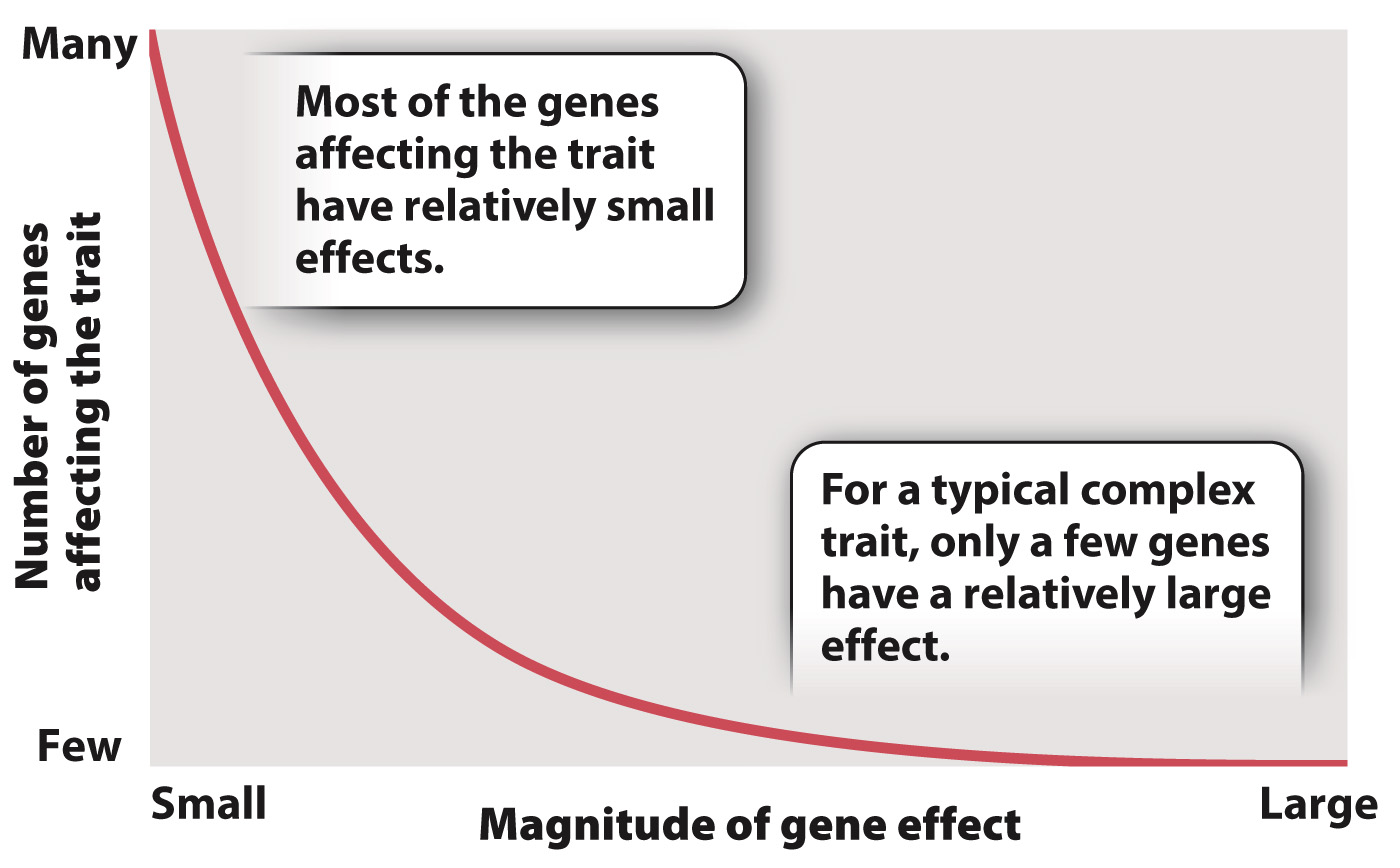Most common diseases and birth defects are affected by many genes that each have relatively small effects.
Because the most common birth anomalies as well as childhood and adult disorders are complex traits, biologists are keenly interested in identifying the genes that contribute to differences in risk, understanding what these genes do, and translating this knowledge into prevention or treatment. They have therefore begun to apply modern molecular methods—
The identification of genes affecting complex traits is not only a major goal of much current research in human genetics, but also in the genetics of domesticated animals and plants. Gene identification is also important in model organisms used in research, especially the laboratory mouse. Much is already known about these model organisms and they are easily manipulated, making it possible to discover the molecular mechanisms by which genes affecting complex traits exert their effects.
The study of complex traits has reached a stage at which patterns are beginning to emerge. Many of these patterns are exemplified by the chromosome map in Fig. 18.12, which shows the location of genes in the human genome that affect cholesterol levels. The first observation is that many genes contribute to amounts of different types of cholesterol in humans—

A principle that is not evident in Fig. 18.12 is that the effects of each of the genes on cholesterol levels are very unequal. Some have relatively large effects, whereas others have small ones. The distribution of the magnitude of gene effects for complex traits resembles that shown in Fig. 18.13. The axes are labeled only in relative terms, because the actual numbers and effect sizes differ from one trait to the next. However, the main point is that for the majority of genes that contribute to a complex trait, the magnitude of their individual effects is typically quite small. The magnitude of the effects of individual genes also often differs between the sexes, which helps explain why complex traits so often differ in prevalence or severity between males and females.

Quick Check 3 When genes for complex traits have effects that are distributed as shown in Fig. 18.13, which are easier to identify: those that are numerous with small effects, or those that are few with large effects?
Quick Check 3 Answer
The few genes with large effects are the easier to detect. The magnitude of gene effects that can be detected depends on the number of individuals studied. The larger the number of individuals, the smaller the effects that can be detected. Whatever the size of the study, however, the genes with the largest effects are always easiest to detect, even though there may be few of them.